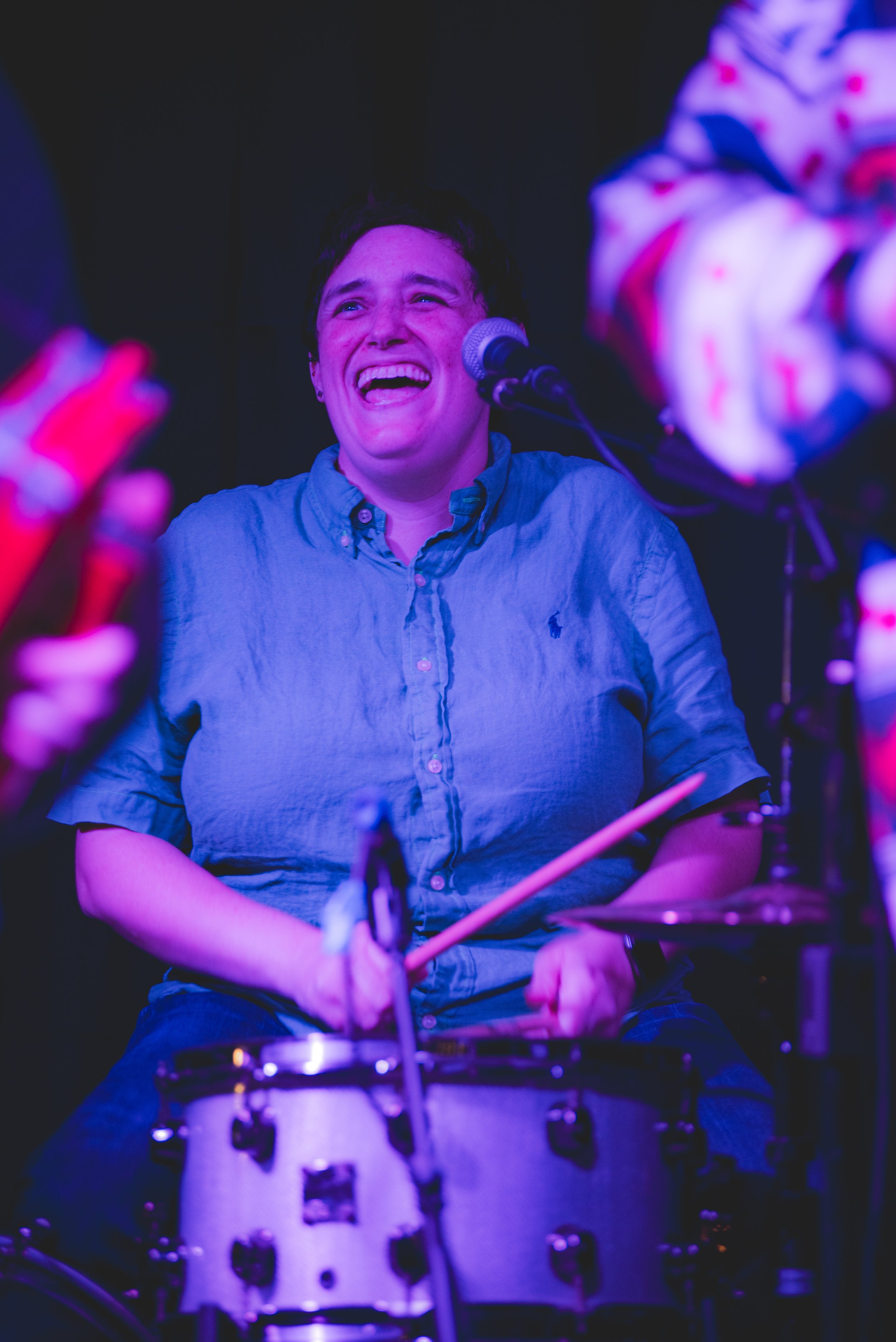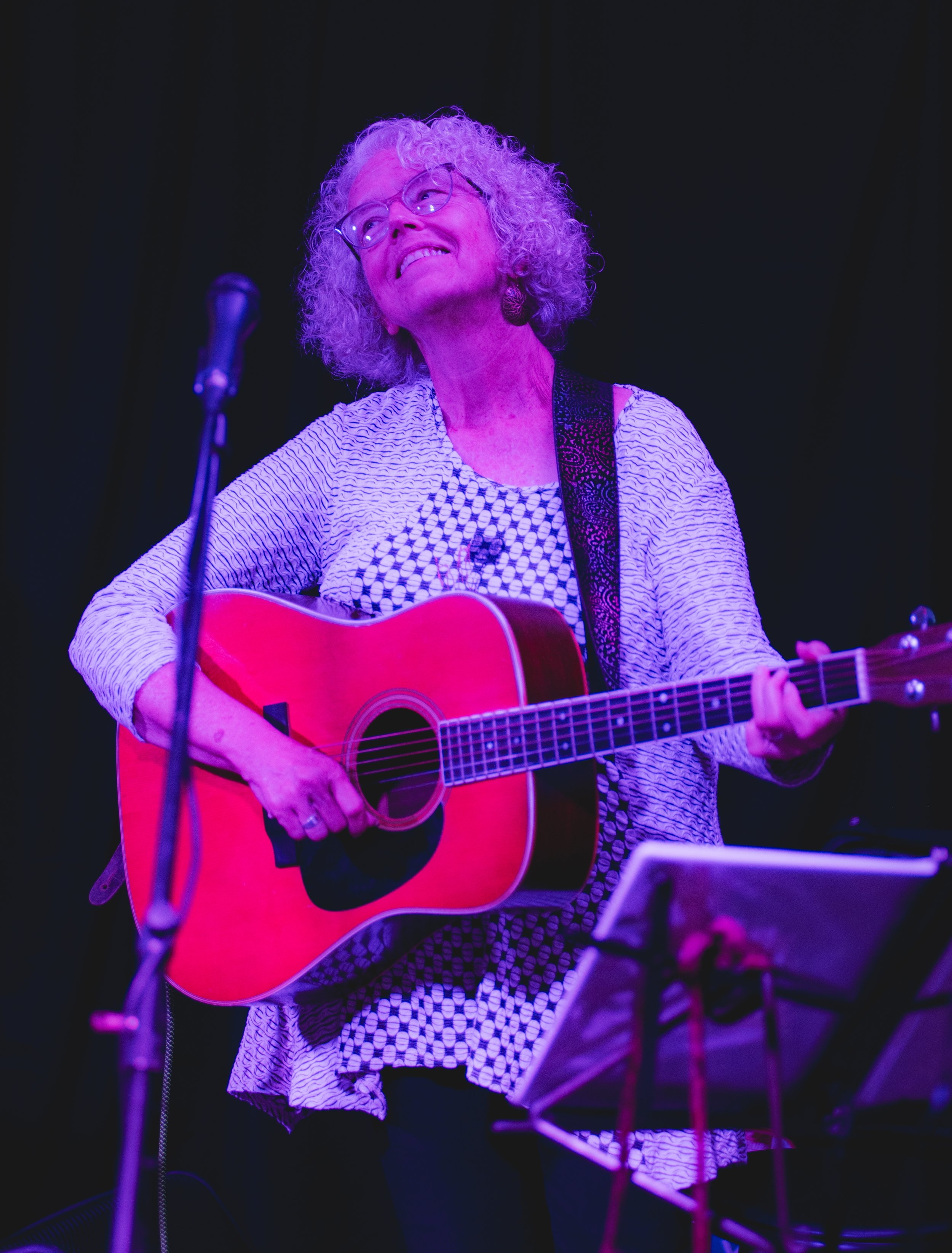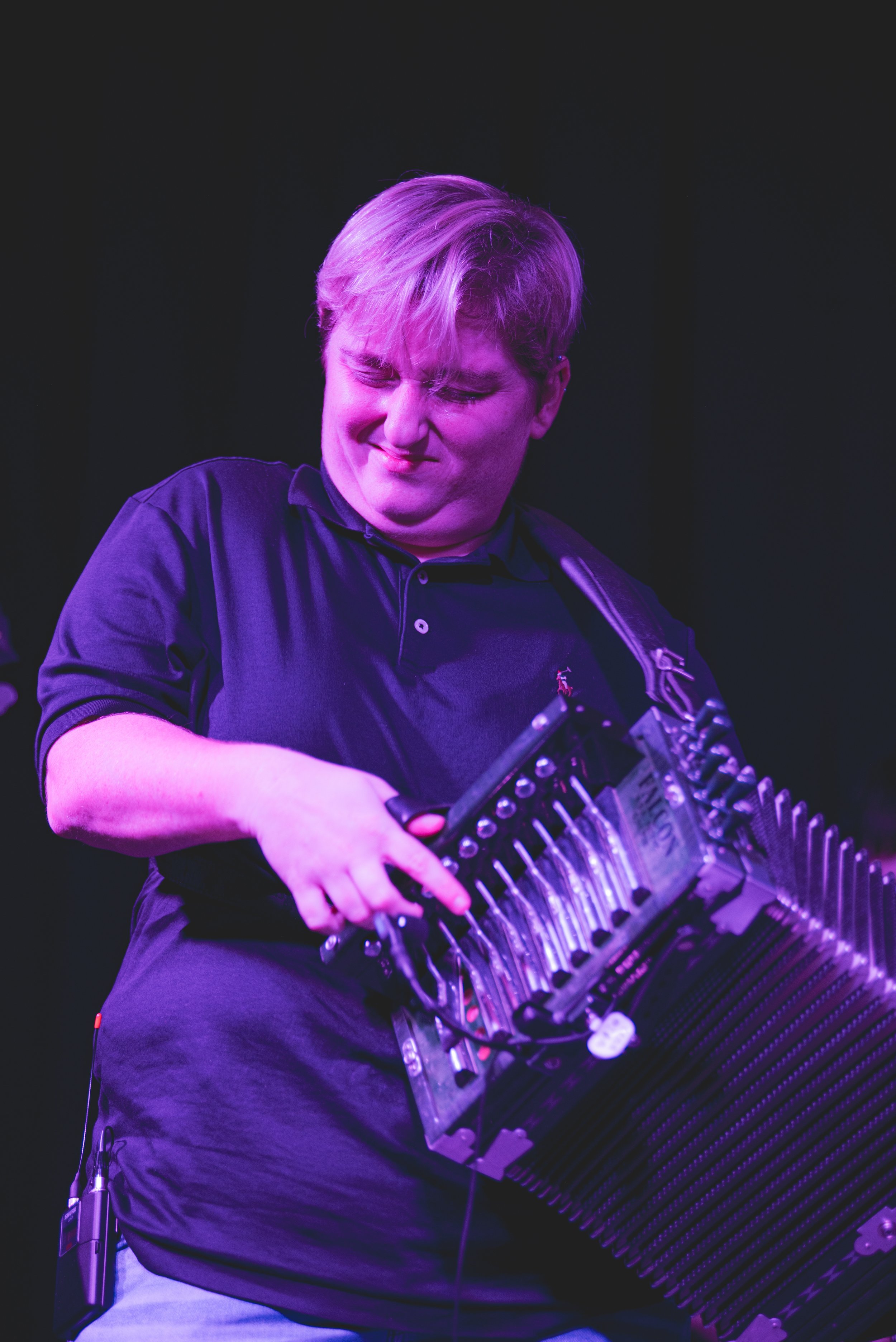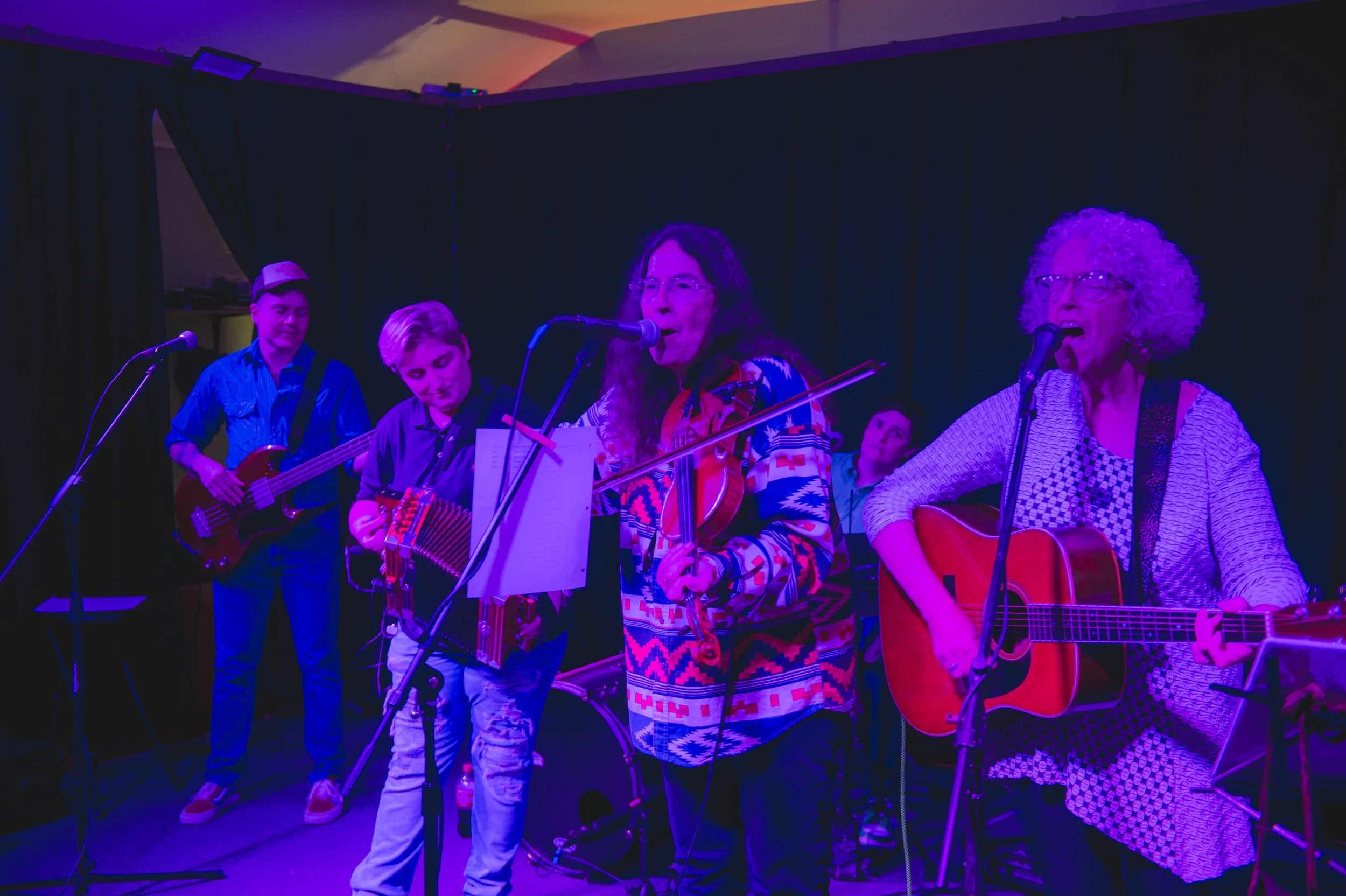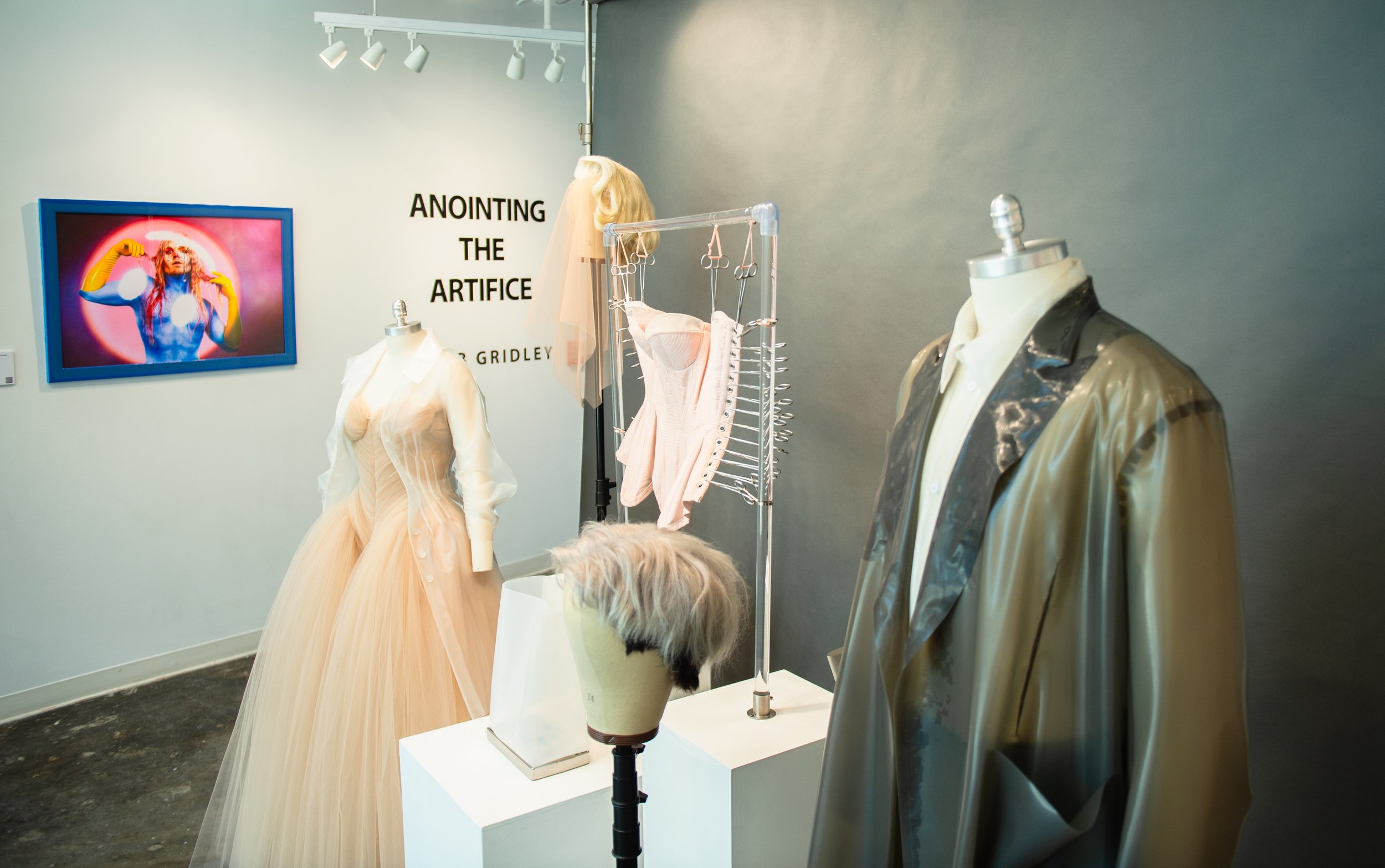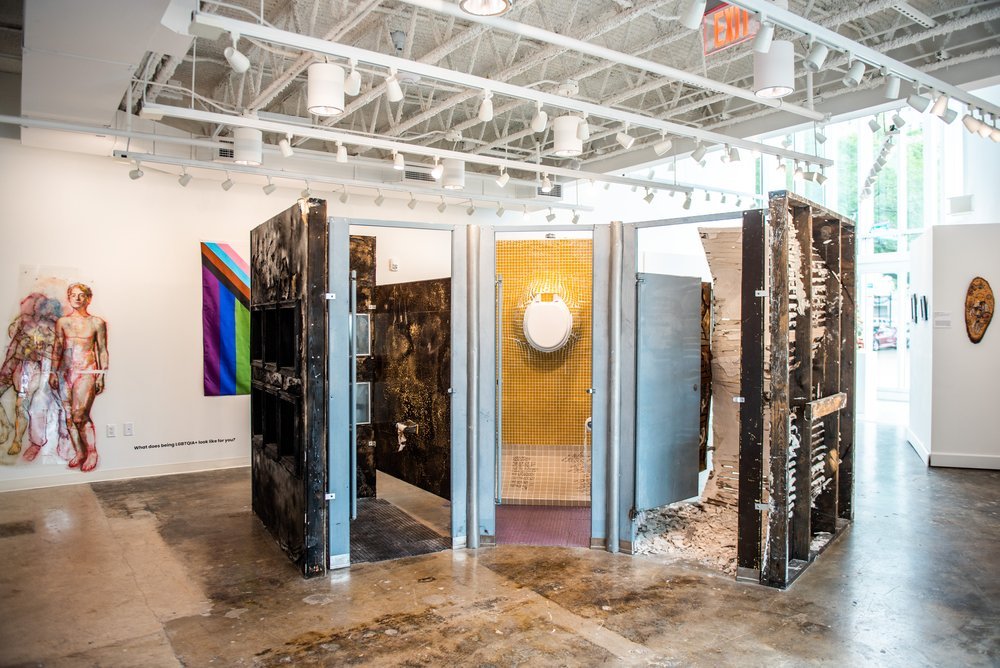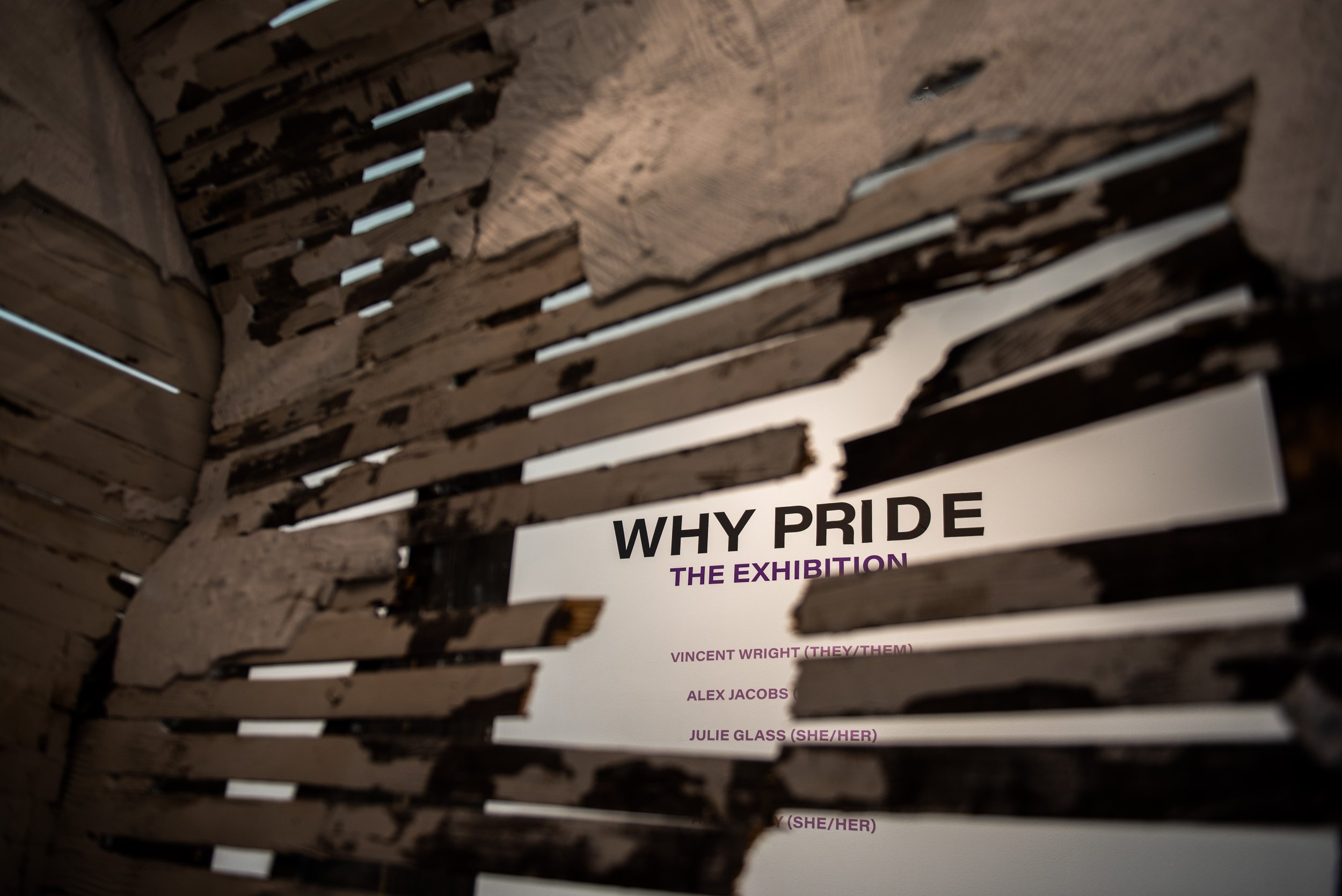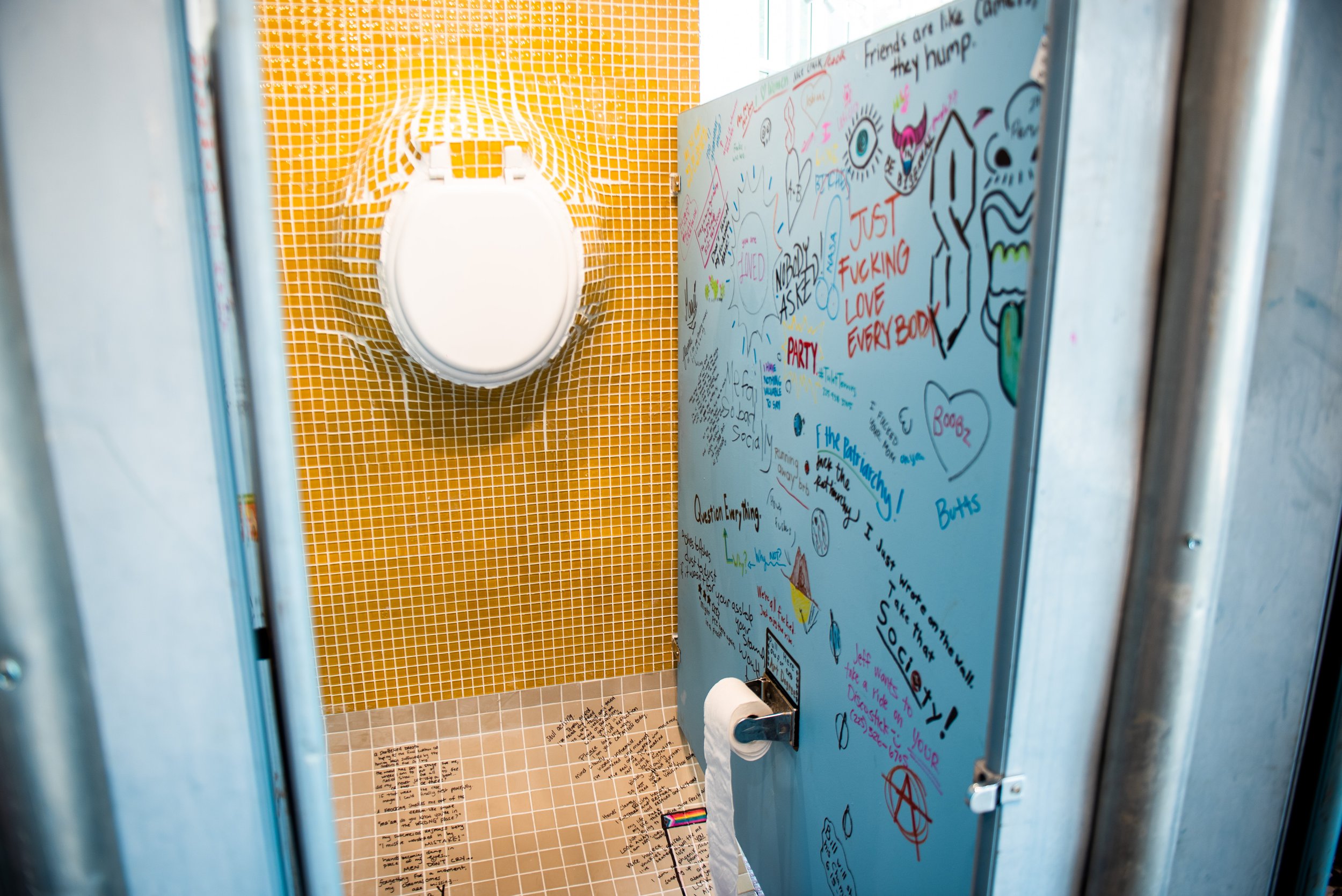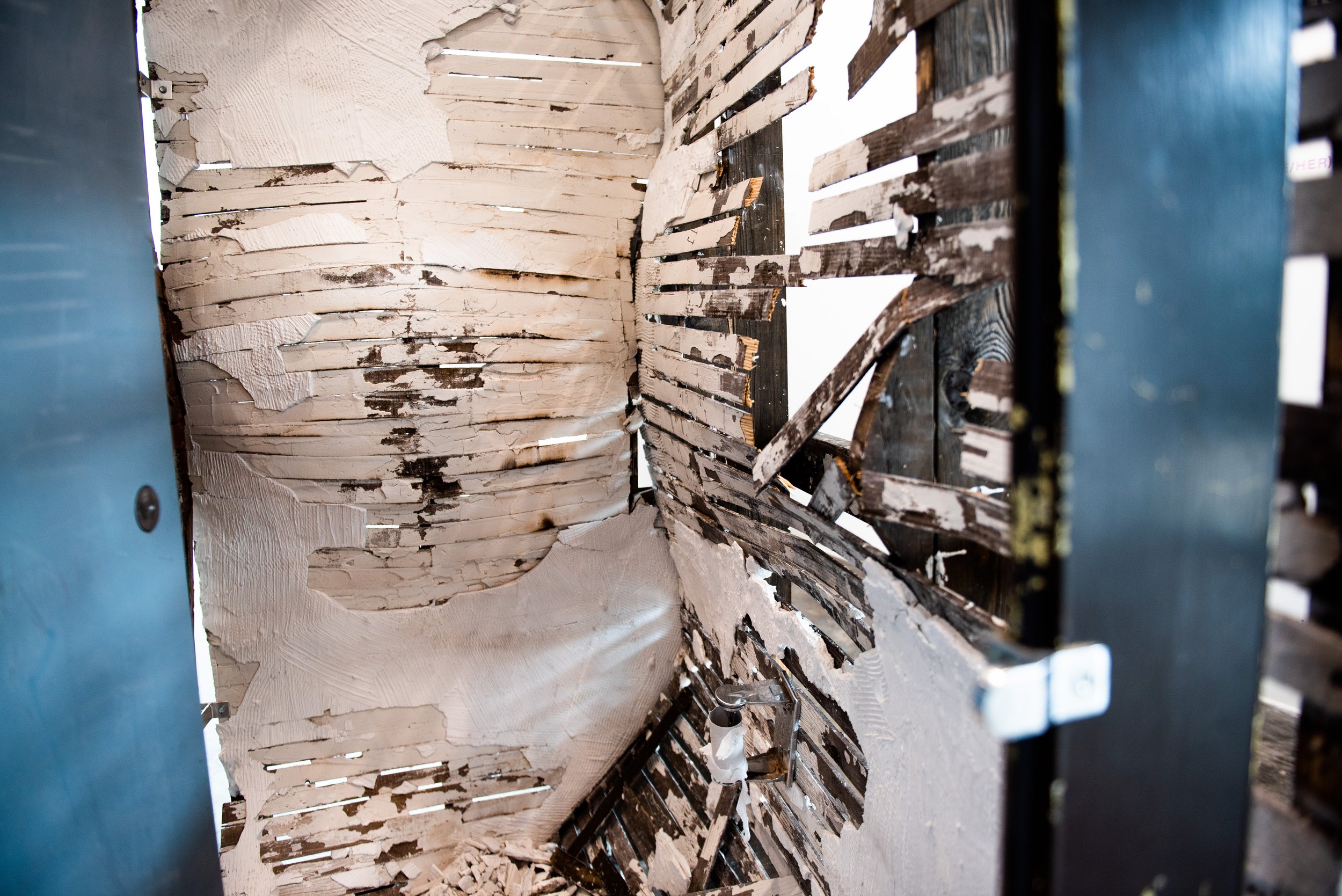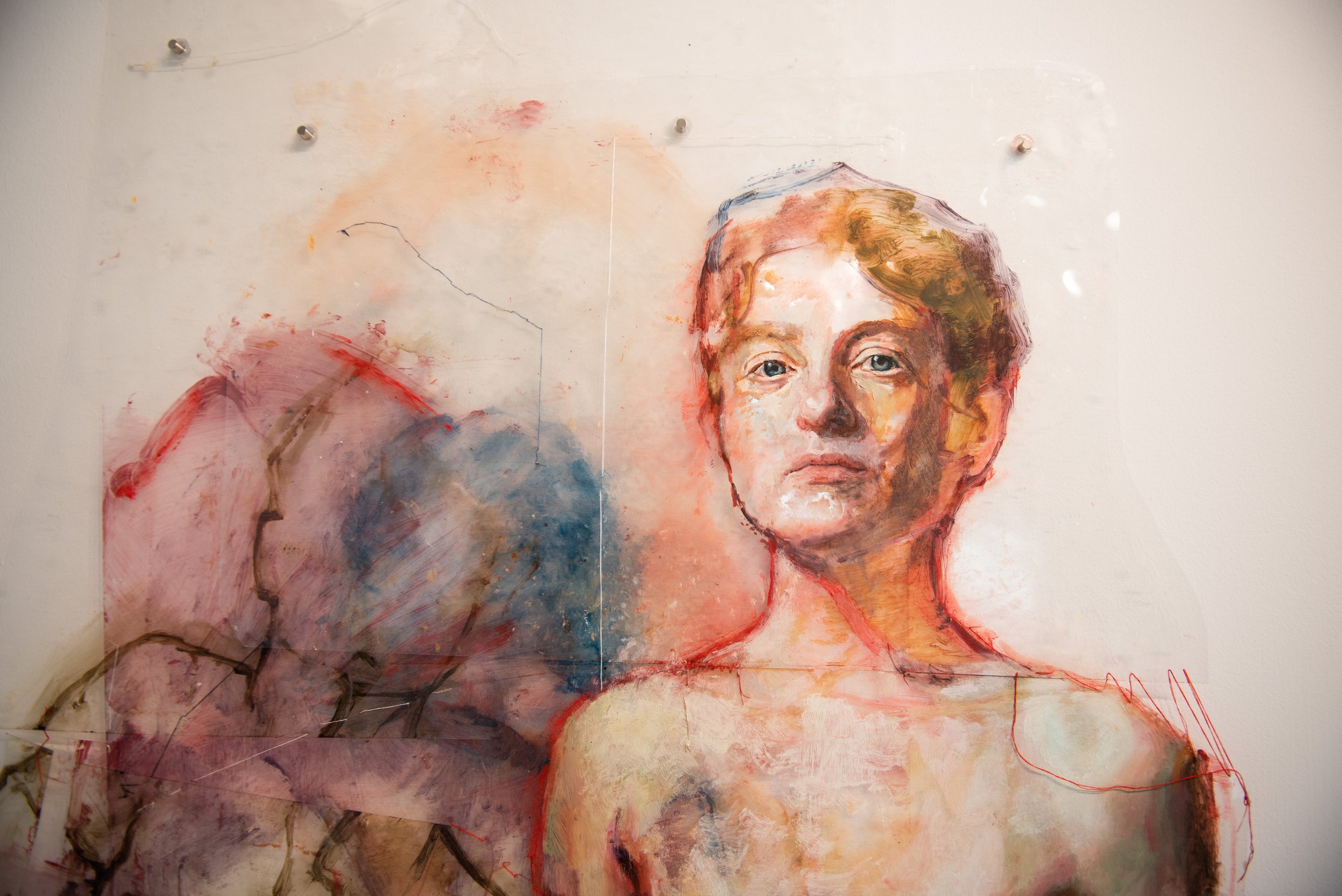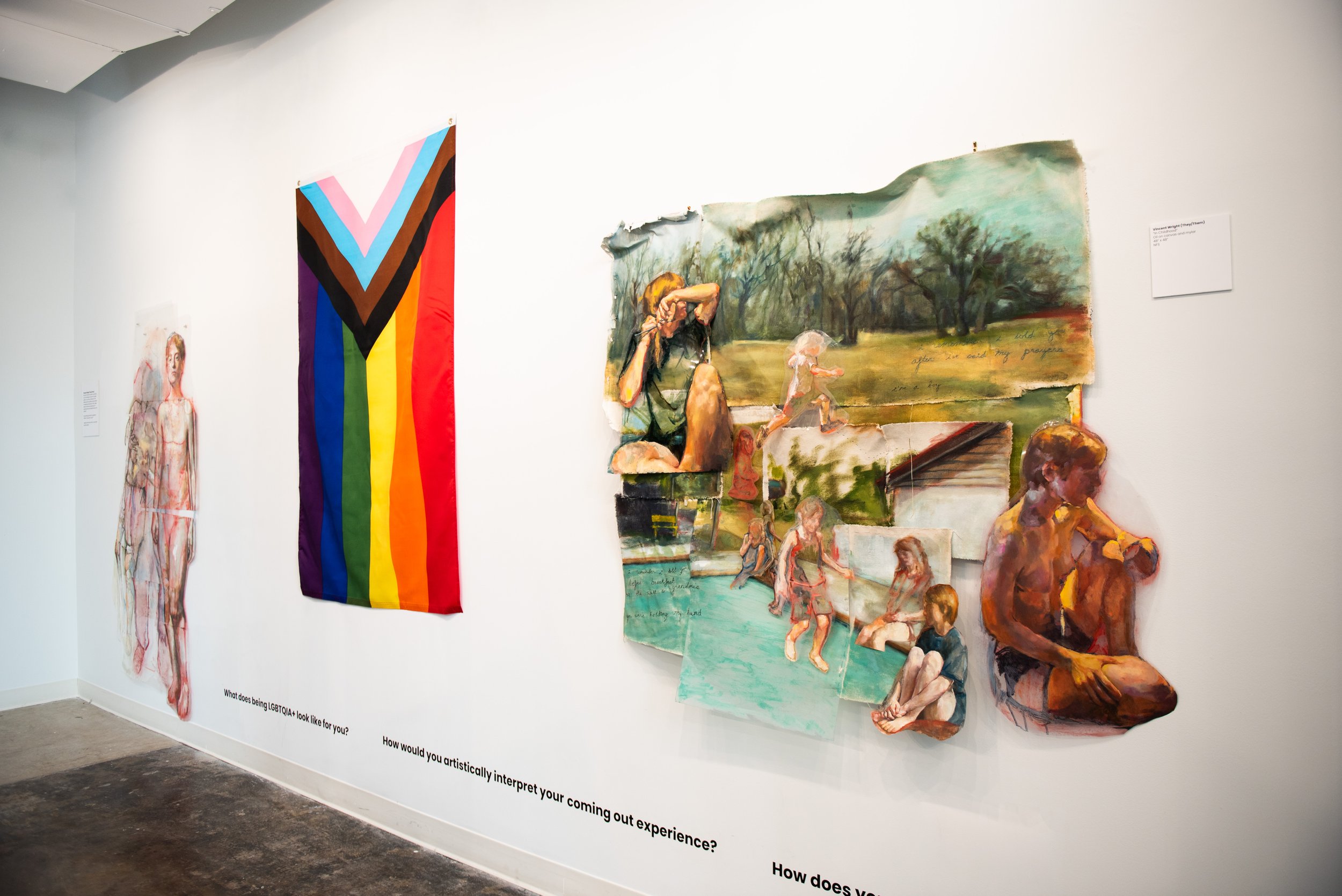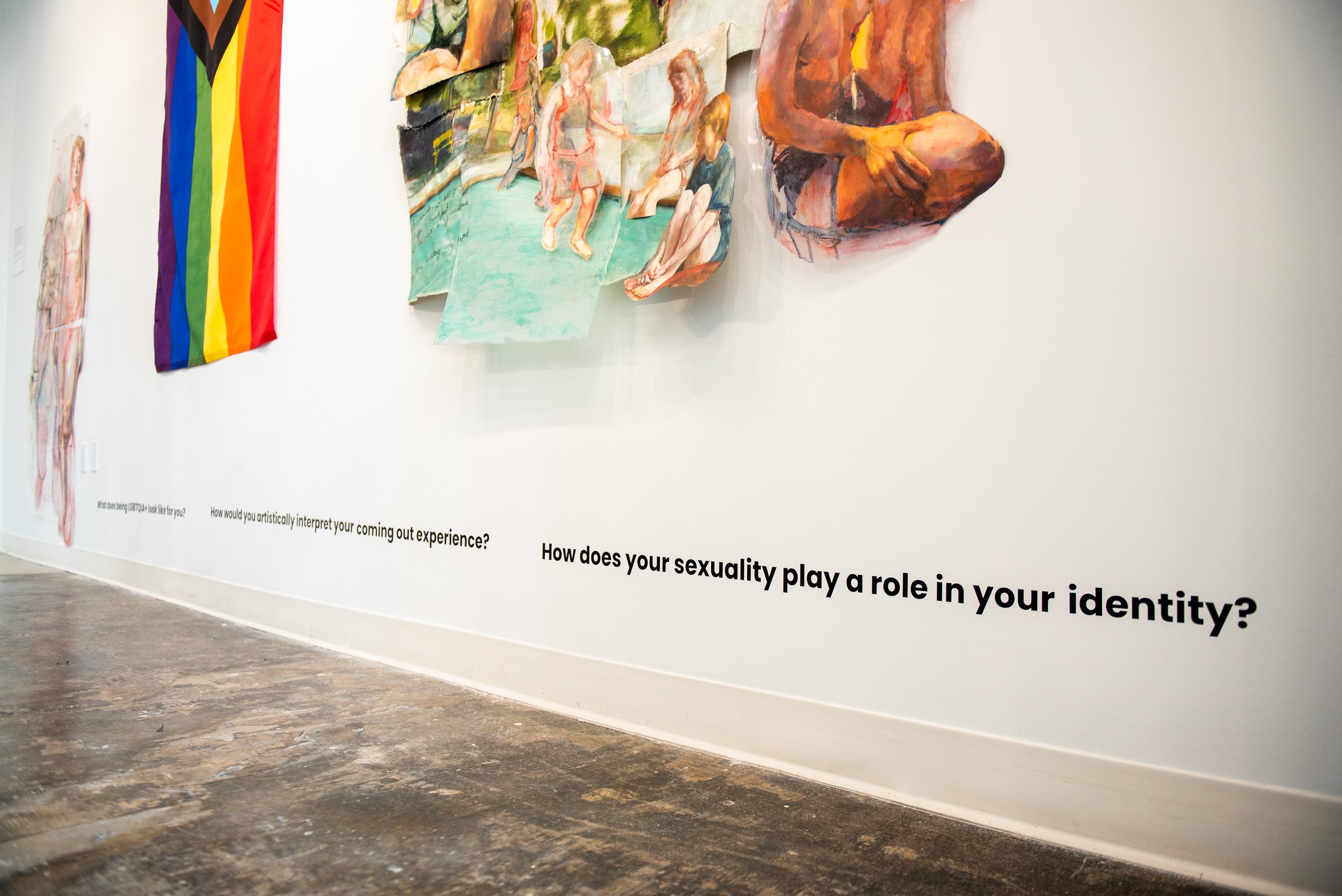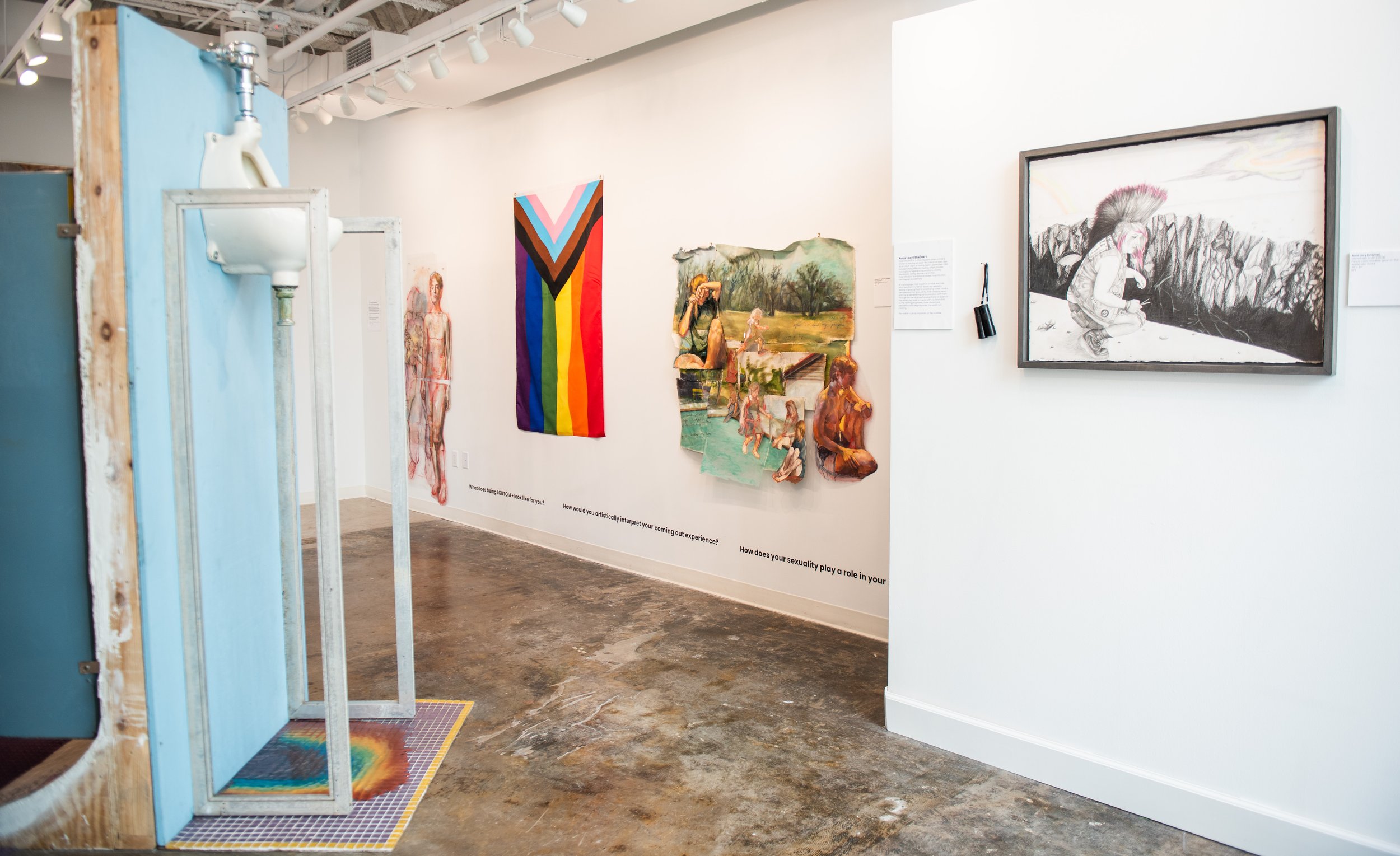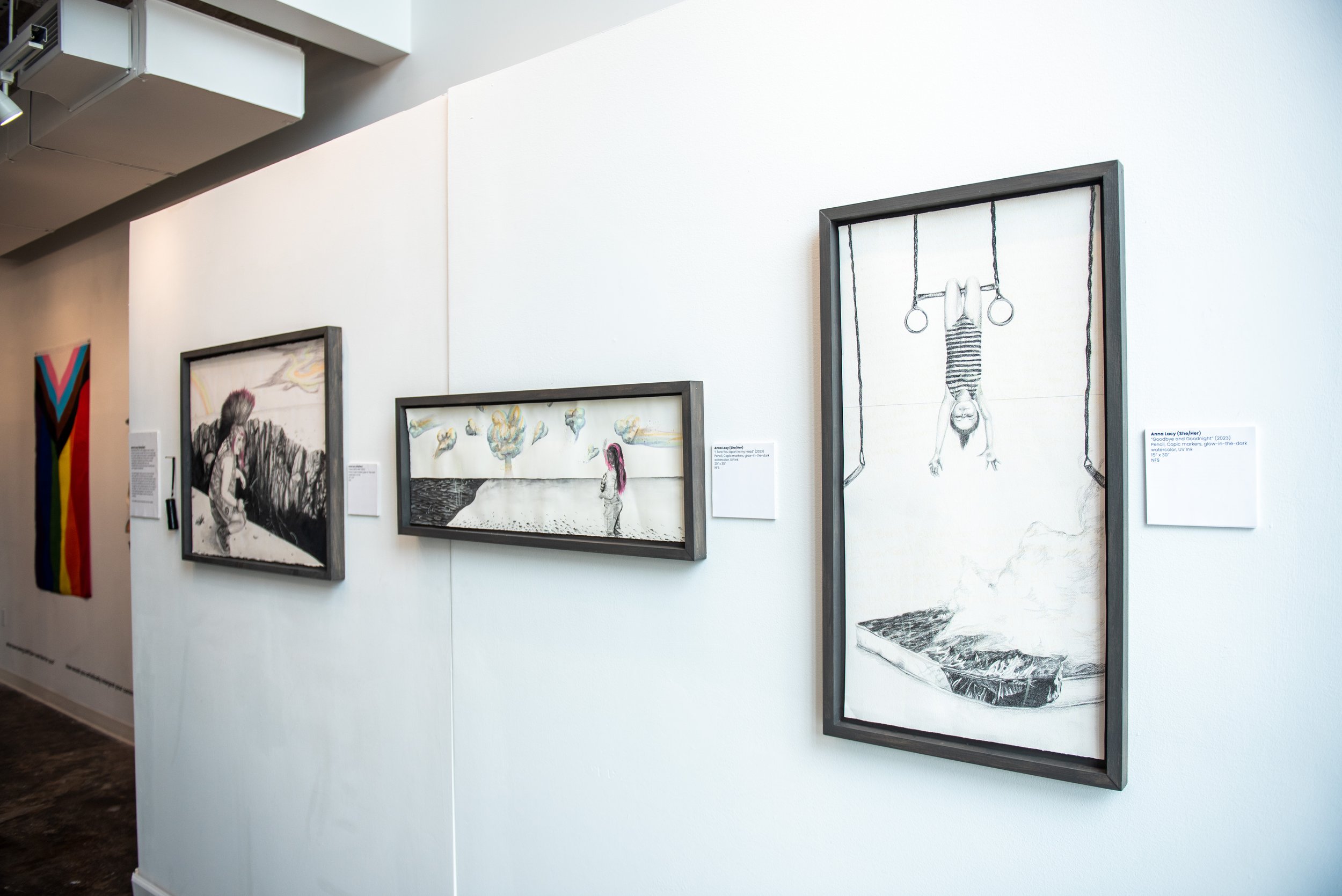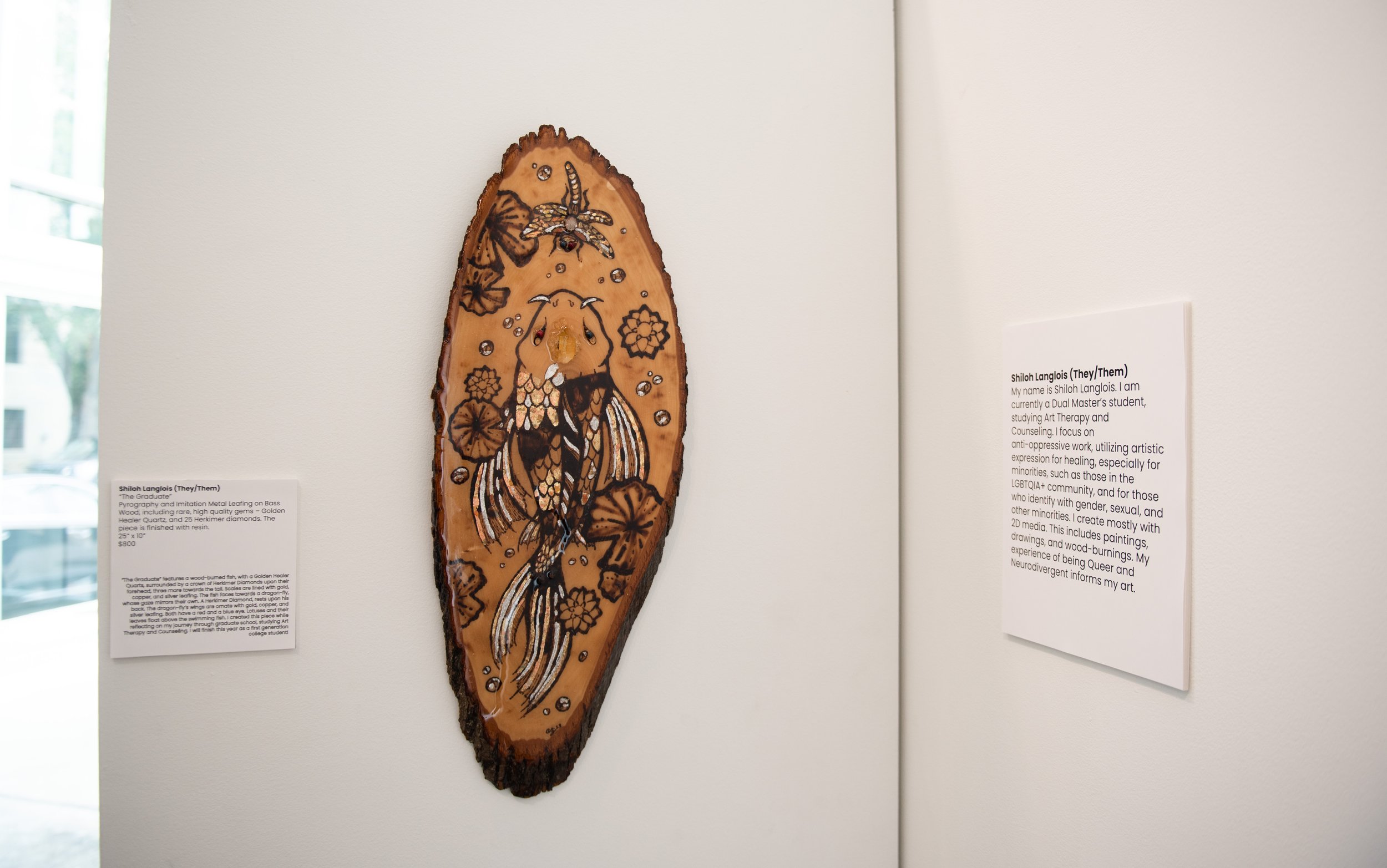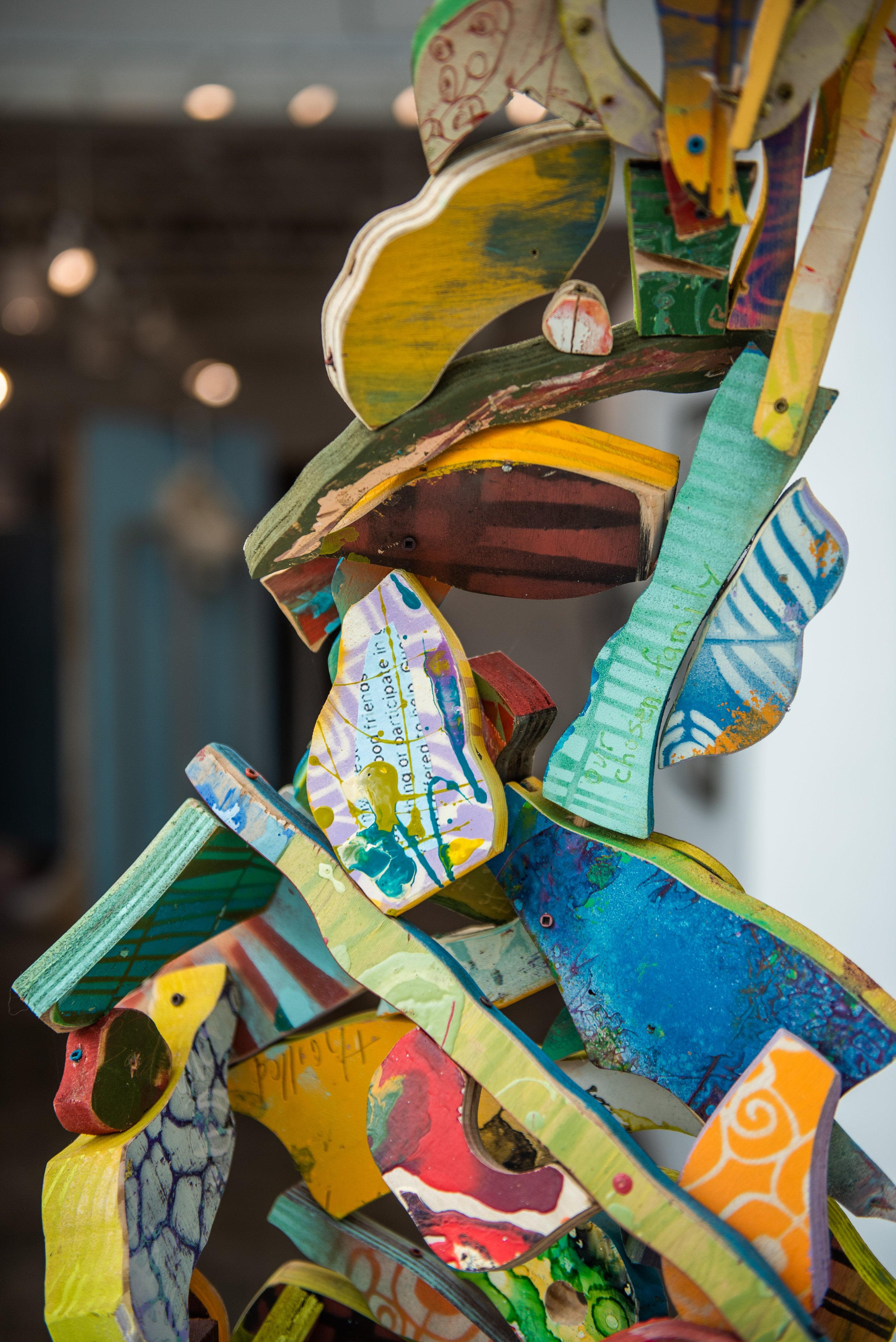capturing moments, curating experiences, & creating community.
Charlie Champagne is a Creative entrepreneur passionate about photography & design, event production, and community collaboration.
Catharsis Within The Collision of Cajun Culture & Queer Eutopia
On Friday, October 4, 2024, the Acadiana Queer Collective & the LSU Department of French Studies, collaborated on a Queer Cajun Music Showcase, in honor of LGBTQ+ History Month, at Hideway Hall in Lafayette, Louisiana.
Photography & Documentation by Charlie Champagne, 2024
On Friday, October 4, 2024, the Acadiana Queer Collective & the LSU Department of French Studies, collaborated on a Queer Cajun Music Showcase, in honor of LGBTQ+ History Month, at Hideway Hall in Lafayette, Louisiana.
This event was more than just a zydeco music showcase. It was a night of catharsis for all of the queer people in the room, especially those who grew up in Acadiana.
As for myself, growing up in New Iberia as a queer kid, was both confusing and intimidating at times. Growing up, we were taught to love, respect, and help one another. But why was that different for those who were LGBTQ? Why did I NEVER see people like me growing up? Where were they hiding, and why?
Meagan Benoit / Percussion / Mandolin / Singer
In all of my memories of attending festivals, concerts, and fais do-do’s, I almost never saw queer couples on the dance floor. If you did, they were most likely older and people would just say they were “friends” or the good old-fashioned “roommates” cover-up. It was rare to see LGBTQ+ couples celebrating their love publicly. So, to have a night dedicated to not only providing a safe space for queer people to gather, but to celebrate the Queer and Cajun musicians as well, was incredibly special. In my 32 years of being both Queer and Cajun, this was the first night where both identities were able to co-exist and be celebrated.
Gina Forsyth / Fiddle / Singer / Songwriter
Jan Boney / Guitar / Vocalist
People underestimate the importance of visibility.
Those who exist in the heteronormative world, are blind to their privilege of being able to exist in a world where they see versions of themselves every day. Their identity isn’t questioned on a daily basis, and their existence doesn’t challenge local dogma or religious principles.
People don’t realize the commonality that both Queer culture and Cajun culture share. Both identities carry rich histories of resilience, cultural expression, and resistance to marginalization. Though each group may have its nuances, their stories reflect the universal human drive for dignity, identity, and belonging.
Sam Wrobel / Bass / Vocalist
Rosemary Benoit / Accordion / Fiddle
Cajun culture focuses on preserving history and tradition, while queer culture often pushes against traditional boundaries to create new possibilities. However, both are marked by historical oppression, the experience of being an outsider, and the power found in communal bonds. These identities, in their own ways, both honor their histories while continuing to resist cultural erasure and find joy and strength in their unique paths.
Both Cajun and Queer identities revolve around community, resilience, and the strength of being different.
please enjoy the full photo gallery below
The Mission of the Acadiana Queer Collective is “to provide opportunities for queer people of Acadiana to show up for one another and promote the positive visibility of queer people throughout the community.”
Intersecting Lines, Handpoke Tattooing & Queer Authenticity
Intersecting Lines, Handpoke Tattooing & Queer Authenticity. An interview with @tattoo.dude, a Southern Queer DIY Handpoke tattoo artist here in Baton Rouge, Louisiana.
Last month, I had the privledge of sitting down with @tattoo.dude to chat about their journey into handpoke tattooing. We talked about self-tattoing as a teenager, to tattooing friends out of their dorm room in college, to now operating out of their home studio here in Mid City.
We also talked about the resurgence of DIY tattooers, creating a safe-space for Southern LGBTQIA+ people, as well as their creative process and experience thus far as a queer DIY handpoke tattoo artist here in Louisiana.
First things first, why do you do what you do?
Colin: “I just love connecting with other people. Especially with other queer people, on what they find important about their life, and putting that on their bodies.“
How was it, for you, growing up queer in Louisiana?
Colin: "I grew up in the Lafayette public school system. As you can imagine, I went through the usual chaos of trying to hide who I was, while at the same time trying to figure it out for myself as well. I came out in middle school, and it's quite a funny story.
I wrote down on the tiniest piece of paper, “I’m gay”, and I had every intention to give it to my brother first. But, I chickened out and put it in my drawer. Eventually, around Christmas time, my mom found it picking up in my room, and she placed it on the Christmas tree. She was like, “What does that say? Who wrote that?” and they were all really cool about it. I was not ready to come out at that time, but I am really grateful it happened when it did.”
How long have you been tattooing?
Colin: Well, I’ve always loved to draw and was always interested in the artform of tattooing. When I was about 17, that interest and desire kind of escalated, and I started tattooing myself to learn more about the technical aspects of tattooing. Then, some of my friends were like, “hey, I want a tattoo too!”, and so, I slowly started tattooing more people; starting out with small tattoos, of course!
Colin: Once I got to college, I started doing tattoos out of my dorm room, then eventually out of my apartment, and now I finally have this gorgeous lil’ home studio that I’m OBSESSED with.”
What I loved about Colin’s space, was that they had several pieces of art ALL from local artists both here in Baton Rouge and the surrounding other parishes. Some are even original pieces and concepts of their tattoo work. The rest of their studio is garnished in the most quirky and eclectic way possible, yet there seems to be a nice balance & cohesion to the space.
What’s your tattoo process like? Do you freehand everything?
Colin: “Well, everything I tattoo is handdrawn by me, but I mainly do use stencils when applying the tattoos to my clients. However, there are situations where I do freehand the design, especially on certain body parts, like ears and fingers.“
Do you feel like there is a lane for you in tattooing?
“Definitely, I really love the fact that I do machineless handpoke tattoos, which of course, doesn’t require electricity - and feels kind of “back to the roots type sh*t”
Colin: You know, not too many people here in the South seem to do handpoke tattoos, so I recognize that fact, and am now able to provide that option for people while also creating a safe space to do so. Alot of people tell me that their experiences with handpoke tattoos are always alot more chill and stress-free in comparison to going to a commericalized machine-gun shop, where you traditionally have to deal with very “macho-manly-men”, and that can get kind of scary and intimidating at times. Especially for queer people.
“Here, I’m a complete safe-space for queer people. Basically, all of my clients are gay as f*ck. “
Colin: For Pride month, I usually do different abstract queer themes, sometimes with different pride flag colors, or whatever other gorgeous pieces I can collaborate with my clients on.
Colin: Overall, it’s been great being able to meet so many cool people who appreciate my skillset and style. It’s also rewarding to be able to connect to so many queer people in the process. I feel that me, being open about who I am, helps attract more of those types of people. There has been such a resurgance of DIY handpoke tattoo artists, especially in the queer community.
This particular trail of thought, really intrigued me during our conversation. I began asking myself,
“What is so inherently queer about DIY handpoke tattooing?”
Why could their be such a resurgance of DIY handpoke among the queer community specifically? What common threads do they share?
DIY handpoke tattooing and the queer identity share a profound link as forms of self-expression that defy conventional norms. Both are often perceived as alternative to mainstream practices, offering individuals a canvas for authentic representation and personal narrative. For many in the queer community, handpoke tattoos provide a means to reclaim their bodies on their own terms, celebrating identities that may otherwise be marginalized. This intimate, hands-on approach to tattooing fosters a sense of empowerment and self-determination, echoing the broader ethos of queer culture's resilience and creativity in defining one's own narrative.
Follow & Support Colin:
Instagram: @tattoo.dude
Anointing The Artifice, by Caleb Gridley
The Arts Council of Greater Baton Rouge, hosts Pride Month exhibition, Anointing The Artifice, by Caleb Gridley.
Photo documentation by Charles Champagne.
Q&A with Charles Champagne & Caleb Gridley.
Exhibition documentation & Q&A by Charles Champagne
The following documentation is in regard to The Art’s Council of Greater Baton Rouge’s Pride Month showcase, “Anointing The Artifice”, by Caleb Gridley, which will be on display from June 1 - July 12, 2024, in the Shell Gallery located inside the Cary Saurage Community Arts Center.
What does this show mean to you?
Caleb: “Anointing the Artifice is both a prayer and malediction to the art of fame. My art functions as a translation of the implicational relationship between audience and celebrity. This exhibition serves as a study of fame, examining those who have it, those who don’t, how it is obtained, and its impact on mainstream mentality both consciously and subconsciously.
Caleb: Three separate bodies of work are on display and in their way each of those delve into the vast realm of how our perception of self can be manipulated through the utilization of digital technology, physical augmentations, and mainstream/social media influences. Anointing the Artifice endeavors to incite profound introspection concerning the essence of self-identity and seeks to engender contemplation on the far-reaching impact of technology, the omnipresence of pop-culture, and the dichotomy of fame.”
What was your reaction when you found out your show was selected for The Art Council’s Pride Month show?
Caleb: “Being chosen to exhibit has been both humbling and exhilarating. It’s a profound sense of recognition for the years of effort that it took to create my current collection of art. It's a moment where someone else sees the value in the world I've constructed through my work. I’m immensely grateful for the opportunity to share my vision with a wider audience and look forward to them forming their own connections and interpretations.”
How has your experience been navigating life as a queer person/artist here in Southern Louisiana? Any special or sensitive memories come to mind?
Caleb: “Southern Louisiana simmers with palpable energy – a rich gumbo of cultures, traditions, and vibrant contradictions. Growing up within this unique zeitgeist undoubtedly shaped the artist I am today. It instilled in me a critical lens that extends beyond myself, fostering a deep appreciation for diverse perspectives.”
Caleb: “This land is no stranger to hardship. We've weathered countless natural disasters, tragedies, and moments of collective loss. Yet, in these moments of vulnerability, our community shines brightest. The outpouring of care, unconditional love, and unwavering support leaves you speechless. It's a testament to the strength and resilience that flows through the veins of Southern Louisiana.”
Caleb: “However, navigating a landscape steeped in tradition also presents its own set of challenges, for not only myself, but countless other individuals whose mere existence challenges the ideals within those traditions. Despite these challenges, I've found a deep appreciation for authenticity in this community. People are genuinely intrigued by artistic expression that fosters open dialogue and challenges perspectives.”
Caleb: “The real struggle transcends Louisiana and speaks to a broader human condition: the fear of the unknown. Humanity, in its current state, tends to reject what it does not understand. My art heavily integrates pop culture, media, and the concept of fame because these forces play a significant role in shaping our collective consciousness. It is imperative for the industries that feed our minds and encapsulate the context of our lifetime to be exponentially inclusive, for they’re not only creating depictions of what will be our history, but also defining the possibilities of our future. They have the power to break down barriers and foster a world where understanding replaces rejection.”
What is one thing that you hope people walk away with from this show?
Caleb: “We live in a world fueled by comparison. A constant barrage of seemingly perfect lives on social media and the ever-present "grass is greener" mentality can leave us feeling diminished. But here's the truth: you are inherently powerful. Trillions of cells conspired to create your rare form, a vessel for a consciousness unlike any other in the vast expanse of humanity. There will always be someone seemingly smarter, funnier, wealthier – the list goes on, but they can never be you.
“Your quirks, your talents, the sum of your experiences – these are the hallmarks of your individuality. These are not flaws to be hidden, but strengths to be celebrated. Imagine a world where every song sounded the same, every brushstroke mirrored another.”
Caleb: “Instead of viewing our differences as dividers, we should celebrate them as the specialized cells that make up the robust organism of humanity. Each individual, with their unique strengths and experiences, contributes a vital function. When we celebrate this diversity of perspectives and talents, we create a symphony of human potential, a powerful force far greater than any individual could achieve alone. This is the essence of true unity – not uniformity, but a collaborative ecosystem thriving on its rich biodiversity. You are a unique expression of life, embrace the power encoded in your very DNA.”
Caleb Gridley, Transmutation
WHY PRIDE
Photodocumentation of the WHY PRIDE LGBTQIA+ arts exhibition presented by The Arts Council of Greater Baton Rouge inside the Shell Gallery located at the Cary Saurage Community Arts Center. Photos by Charles Champagne.
2023 Pride Month Exhibition presented by The Arts Council of Greator Baton Rouge, held inside the Shell Gallery located at the Cary Saurage Community Arts Center.
This Pride month, I sat down with Lundyn Herring, the Director of Visual Arts at the Arts Council of Greater Baton Rouge as well as the exhibitions participating artists to talk more about the recent LGBTQIA+ exhibition, WHY PRIDE.
Q : “Can you tell me a little bit about how this show came about?"
Lundyn : “Originally, my vision for the show was to partner with The Trevor Project, and get stories of victims of suicide, via their families, and use those stories in tandem with the artwork — stories of these people who have taken their lives due to all the existing prejudice, and with that, be juxtaposed next to all this beautiful art inspired by everyone’s identities. Unfortunately that original plan fell through, but then I met Alex about a month before this show was planned to go up, and I saw how amazing the bathroom sculpture was and knew that had to be included. Anna Lacy and Vincent have shown with us before, and it’s been amazing watching how they’ve grown as artists. So, it was great to have them involved again for this year’s Pride month show.”
“This exhibition kind of came into fruition as I began meeting more people and started immersing myself more in the Baton Rouge community. Even though I am a lesbian myself, I haven’t been a lesbian out in Baton Rouge in a very long time. It was nice to get back into the local queer scene, and meet a bunch of new people, especially all of the young queer people. It was very heartwarming. ”
Alex Jacobs (He/They)
Q : “Tell me more about your piece in the show.”
Alex : “This work was conducted in collaboration with my partner. I constructed it as a physical manifestation of their writing and experiences as a non-binary person navigating a straight cisgender world. As an outsider on the inside, I have the unique opportunity to physically manifest their writing and our shared experience in a physical space for others to inhabit.
Whether at work, school, the store, or on a road trip, using a public restroom is rarely a comfortable situation to find oneself in. This necessary part of life can be extremely awkward for anyone. However, for some people, using a public restroom can be terrifying. Throughout my life as a cisgender man I spent very little time thinking about using a public restroom. I have always tried to abide by the expected decorum of the men’s room, such as proceeding to the stall farthest from the door and always leaving a buffer zone at the urinals. However, I learned that this was not the case for my partner. “
Alex : “They have been receiving gender-affirming care for several years. Currently, they are at a point in their transition, where, on any given day, they could be viewed as either male or female. This can make what should be a simple task – using a public restroom – extremely hazardous to not only their mental health but also to their physical health.
To help alleviate some of the stress that they experience using public restrooms my partner and I have developed a routine for when we are out or on a road trip. When my partner states “I need to [go]”, I reply with “Are you going, or are we?” Their answer is often determined by where we are when nature calls.
“The installation aims to question the audience's perspective in a time of polarization to find a connection despite that which divides, by humanizing a community that is vilified by political leaders. To pose this question, I created a space in which the audience sees, feels, and hears an unfamiliar experience in a recognizable place.”
Q : Why do you believe this show is important?”
Alex : “WHY PRIDE creates a platform for the community that will hopefully humanize our stories and experiences. This show is a celebration of Pride. It is a promotion of self-affirmation, dignity, equality, and visibility. “
Q :“How important is it to you, to be able to not only make art, but to make art that reflects who you are as a person?”
“It is my belief that art is a means for self-expression. A way to communicate the ideas or beliefs one holds most dear. The creation of art is my chosen platform to speak to the world, and to the issues that I feel must be addressed in order to make the world a better place for everyone.”
Vincent Wright (He/They)
Q : Tell me more about your pieces in the show.
Vincent : “My work mainly focuses on growing up in the religious south of the United States as a queer person. I explore my identity and who I am in the context of growing up in a restricted hyper religious household.”
“As a trans individual, girlhood was something I found myself not quite fitting in, and boyhood was something that I longed for. I remember feeling a deep sense of shame for how I felt and jealousy for not being able to do the things my brother could. My paintings reflect the question, “What if I was born a boy?”. I explore what could’ve been, what was, and what is.”
“Repudiate (tranny) is an exploration of transitioning as a trans person. It consists of a series of self- portraits from childhood to adulthood layered on top of each other and held together by thread. The painting was created at the same time anti-trans laws were being passed (they still are) and when the trans body was becoming more of a political and moral debate.”
“There are significant gaps in my childhood memories, but I often remember not feeling real and not understanding myself or having the words to express my troubles. I am interested in the past and identities. They are both hard for me to fully understand or grasp. I paint figuratively with oils on repurposed canvas, children’s clothes, and transparent plastic sheets that I layer onto my paintings. I also used visible mending and stitches to hold it together. The end result resembles a puzzle—the stitching ties in with the idea of mending and creating something new from the past.
I am trying to fix something that has broken down over time and rediscover myself. In the end, my work is an exploration of gender, whether that be the past, present, or Future.”
Q : “Why do you believe this show is important?”
Vincent : “This show is important due to the political climate and the escalating LGBTQIA+ hate. Queer representation in the South can often become overlooked. This show also allows viewers to understand/ sympathize with queer identities.”
Q : “How does your practice play a role in your identity?”
Vincent : “I use painting to process my identity and create a world of hypotheticals. Painting self- portraits has allowed me to see myself from various perspectives. Utilizing stitching, old clothes, and images from childhood has allowed my work to become a reflective process. To be an artist, you must question the status quo and the rules that society has pushed on you. Being genderqueer is like the process of painting; it is an act of becoming.
Q : “How important is it to you, to be able to not only make art, but to make art that reflects who you are as a person?”
Vincent : “It is very important. It is what I put into the world and what others perceive me. I find it it is difficult to talk about my identity directly. Instead, my paintings are an outlet for my true identity. It is my goal that others will see themselves in my work.”
Q : “What do you hope people take away from this show?”
Vincent : I hope people will walk away with a more nuanced understanding of being queer and how it can be expressed. I believe that the audience would come out with a better understanding of queer struggles. I also hope they can relate to the pieces in the show and see the beauty in being queer.
Trash (Anna) Lacy (She/Her)
Q : “Why do you believe this show is important?”
Trash : “Shows like Why Pride are important because it gives a voice to artists who deal with the topic of sexuality in their work or whose sexuality has affected how they create work. It also shows lgbtq+ youth that their voice matters and that they aren’t alone in the world.”
Q : “How does your practice play a role in your identity?”
Trash : “I have been creating work that fits in the Magical Realism movement and has been helping me work through finding myself again. I like to make small sketches and then the pieces tell me how big or small they should be based on the sketch. I use photos of myself a lot and since I started doing that it has started helping me become more confident in what I wear and how I express myself.”
Q : “How important is it to you, to be able to not only make art, but to make art that reflects who you are as a person?”
Trash : “Being able to make work that reflects who I am as a person has helped me get back in touch with my inner child. They got hidden away years ago when I was focusing on hiding my sexuality from my family. This has helped me be able to work through a lot of my anxiety and depression and also helped me stop caring so much about what people think of me.”
Q : “What do you hope people take away from this show?”
Trash : “I hope they take away from this show that it’s OK to be gay and that when you hide that away you’re hiding yourself.”
Q : “Is there anything else you’d like to share?”
Trash : “Like my work there is more to it than just what’s on the surface. You have to look in the correct lighting to get the full story.”
Shiloh Langlois (They/Them)
Q : “Why do you believe this show is important?”
Shiloh : “I believe this show is important because it facilitates conversations between artists who identify as LGBTQIA+ and the community.
Shapes, colors, forms, and texture translate to viewers' thoughts, emotions, memories, etc. Personal projections about the way we view and experience the world are projected onto the art.
It opens up dialogue about how we experience the world similarly and differently. It allows us to look at intersections such as sexuality, gender, neurodivergence, race, culture, etc.”
Q : “How does your practice play a role in your identity?”
Shiloh : “My practice, as both an artist and art therapist, helps to define who I am. A saying by Picasso goes something like - I make art because I have to, not because I want to. I feel like it is a must for my survival.”
Q : “How important is it to you, to be able to not only make art, but to make art that reflects who you are as a person?”
Shiloh: “It is impossible for me to make art that does not reflect who I am. I really feel like my creativity is sporadic - almost like it's a being that resides inside of myself, rather than just a component of Shiloh. One of the reasons I didn't go to a formal art school is because of this inability to control exactly when it happens. It causes me extreme stress and anxiety to create when I do not feel the "flow." Art Therapy school is not the same as formal training in technique.”
Q : “What do you hope people take away from this show?”
Shiloh : “I hope that people take away whatever comes to them from the show. As an art therapist, I learn to accept that people find their own meanings, which can be intimate and very personal. I am less attached to the result, but being able to express my work publicly does feel relevant at this point in time.“
Julie Glass (She/Her)


